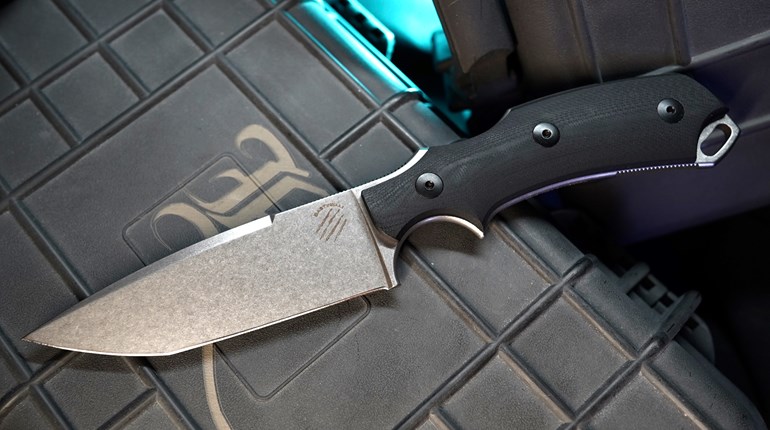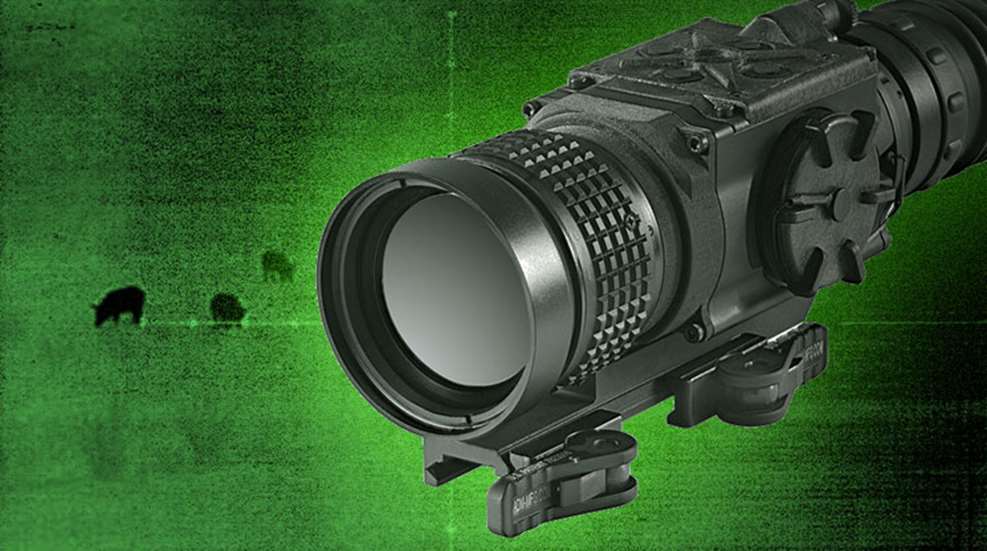
When I first toured FLIR’s Portland, Oregon facility a few years ago, I don’t know that I really understood what it was the company made. Thermal imaging equipment? For, like, military and police helicopters? That’s neat, but a little out of the price range of anyone but your wealthy Uncle Sam. That was about the time that FLIR was starting to develop more products for civilians—you know, those of us who don’t have a helicopter.
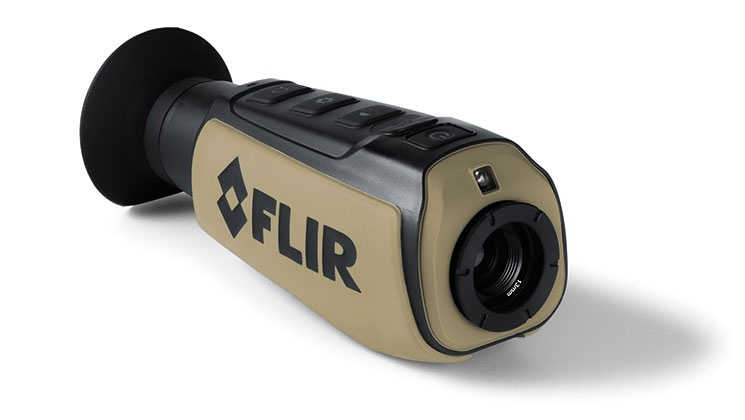
The initial products I saw were pretty amazing, and I’ll never forget that first demonstration that Angelo Brewer and Haley Ellison set up to show me how their products work. They told me to put my hand on the wall. When I was sure I wasn’t being arrested, they told me to look through a compact thermal unit, and there it was—the perfect thermal signature of my hand on the white wall. Then, I looked out in the parking lot. Not only could I see the heat from people walking in and out of the building, I could tell how long it had been since a car was parked in each parking space (it was a sunny day, which I’ve been told are sometimes rare in Portland). Spaces that had been recently occupied were cool, and the spots that had been open for a while were warmed by the sun.
James Bond stuff to be sure, but how did it apply to shooters—more specifically, to hunters? Over the last several years I’ve learned that thermal imaging equipment has a lot to offer hunters. During that time, FLIR has continued to offer more products that are lighter and more affordable. So long as local laws allow the use of thermal optics, there’s a lot that this new technology has to offer. Here are eight ways that thermal is changing hunting for the better.
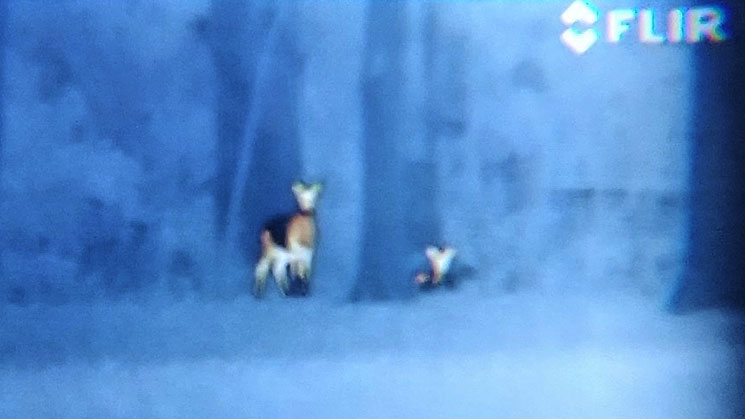
1. One Optic for Day or Night
Unlike image-intensified (more commonly known as night vision) optics, thermal technology works in complete darkness and full sun. As a demonstration of how effective the technology really is, the FLIR team set up a scavenger hunt for a team of writers at Gunsite Academy in Arizona. It was almost noon and the sun was high and bright when we set out into the desert in teams of six with handheld Breach PTQ136 handheld thermal units to find more than a dozen “targets”—plush animals stuffed with ice or outfitted with hand warmers—hidden in the creosote bushes and palo verde trees surrounding the main office. In short order, we’d collected all of them. The point of the exercise was to demonstrate that thermal technology, which is often associated with night hunting, is equally-suited to daytime hunting. That means one optic for calling coyotes or busting hogs under the cover of darkness and during morning, evening or mid-day setups.
2. Thermal Optics Have Become More Affordable
The term “affordable” is relative based upon your personal budget, but there’s no denying that the cost of thermal technology has dropped significantly in recent years. Need an example? The pint-sized plug-in FLIR ONE Gen 3 unit that turns your smart phone into a thermal imaging device costs $199 today—in 2007, that same technology cost roughly $15,000 to purchase. High-quality thermal imaging optics, once reserved for the independently wealthy, are now within reach of the average consumer. FLIR’s Scout TK, which offers a 640x480 LCD display, multiple color palettes, built-in still and video imaging capabilities and fits in your pocket carries an MSRP of $599. The new PTS line of thermal riflescopes start at $2,199. Cheap? Maybe not. But compared to what you’d pay for this type of technology a decade ago, these products are a steal. In addition, technology advances such as the new Boson Core make FLIR’s thermal gear lighter than ever before.
3. Better Scouting
For the last two decades, trail cameras have served as our eye into the outdoors. As effective as they are, trail cameras have their limitations—primarily their lack of mobility. Thermal is different. In fact, I’ve learned a great deal about wildlife habits and movement from the time I’ve spent out in the woods at night with the handheld Scout III unit I’ve been testing. It’s helped me understand how and when deer approach food plots, which plots they seem to prefer and how they move at night during the rut. In addition, I’ve watched coyotes, foxes, rabbits and a variety of other game. I’m currently using a thermal unit to determine how hound hunting—specifically raccoon hunting with dogs—effects deer movement at night. Thermal offers a window into what’s happening around your hunting property in the dark.
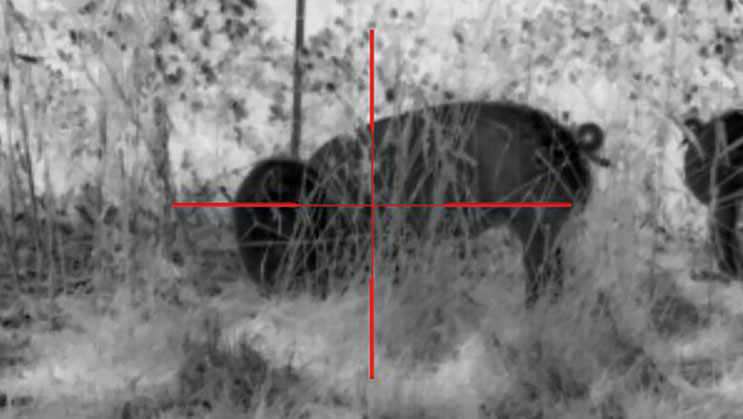
4. Reducing Hog Numbers
A few centuries ago, Hernando de Soto and his team of Spanish explorers were traversing what is now the southeastern United States. Apparently, de Soto and his crew had a predilection for pork, and on that journey they brought along hundreds of pigs. A sizable number of those pigs escaped, went feral, and were the foundation stock for the estimated five million wild hogs that now roam at least 38 U.S. states. To say that feral hogs are a problem is an understatement, for these invasive swine cost this country billions of dollars in crop loss each year and are displacing native species. Worst of all, eradicating pigs is very difficult, but thermal imaging can help. FLIR’s new PTS233 thermal scope is a compact unit that mounts directly on your rifle and offers a variety of control options to switch color palettes and reticle layouts, and allows you to hunt hogs under cover of darkness—the best time to intercept these feral swine. Pigs are a threat to many of our valuable native wildlife species including whitetail deer, turkeys, waterfowl and upland game, and they offer affordable hunts, liberal, if any, bag limits and long seasons. Reducing hog populations helps other game and farmers, and a thermal scope is a superb option.
5. Conserving Wildlife Populations
Thermal technology is being used by wildlife law enforcement to help reduce poaching and illegal hunting at night, and that’s a benefit to all hunters and game populations. One example of how effective thermal technology can be on reducing poaching comes from Kenya, an African country that has lost a sizable number of its elephant population to poachers who sell ivory on the black market. In one area of Kenya that was particularly ravaged by poaching, game rangers who were struggling to stem the tide of illegal ivory managed to nab over a hundred poachers in short order thanks to thermal technology. But the conservation benefits are not limited to Africa; in the United States, thermal technology has become a way for wildlife officers to help reduce the toll poachers take on wildlife, preserving the future of our sport.
6. Eliminating Predators
Any whitetail hunter will tell you that booming coyote populations take a toll on deer populations, especially in the spring and summer when these opportunistic predators are busy sorting out fawns. Serious game managers know that predator control is the key to a healthy population of game animals, and more and more land managers and coyote hunters are turning to thermal optics. A rifle with a thermal optic is lighter and less cumbersome than a traditional white light and filter, and it allows you to see coyotes that are hidden in brush or shadow—something that’s difficult even with night vision equipment. A centerfire rifle with a thermal optic is a coyote gun par excellence and you’ll be able to intercept more of these crafty canines as they come to your call day or night.
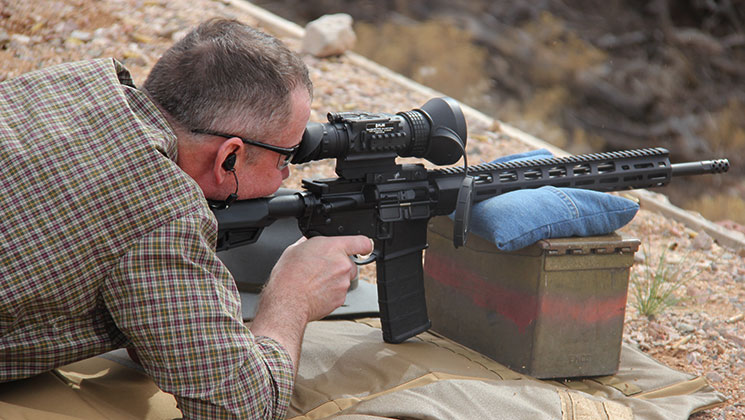
7. Protecting Hunters
Have you ever been camped in grizzly country when nature called in the middle of the night? It sure is nice to have a thermal handy during such instances, as a quick scan of the surrounding area offers some protection against bumping into a big bear when you’re venturing out to do your business. But that’s just one way that thermal protects hunters. If you’ve ever hunted deer on public land during firearms season, you probably realized at some point that your secret hunting spot isn’t so secret. Having a small handheld thermal in your pocket allows you to determine whether or not there are other hunters setting up nearby, and that can be a real asset. Regardless of how safe you are, you never know how well-versed the guy who just set up shop forty yards away from you is in gun safety, but with a thermal, at least you’ll know they’re out there. And if you’re all set up to sweet talk that gobbler you know is across the field and suddenly realize some other hunter is wandering around under the roost tree, you can count your losses and bail.
8. Finding Wounded Game
Handheld thermal units are invaluable when you’re trailing game (again, be sure to check local regulations to be sure you’re in accordance with game laws). Where legal, a handheld thermal can be a great asset when you’re struggling to find a blood trail in the dark, especially if you’re caught in a sudden rainstorm, which makes blood even more difficult to find in leaf litter. With a thermal unit, blood stands out clearly, and you can also spot the heat signature of a downed animal in thick brush. I lost a deer several years ago when it crashed into a big brush pile and expired, and I’m convinced that if I’d have had a thermal unit I would have recovered the animal.














